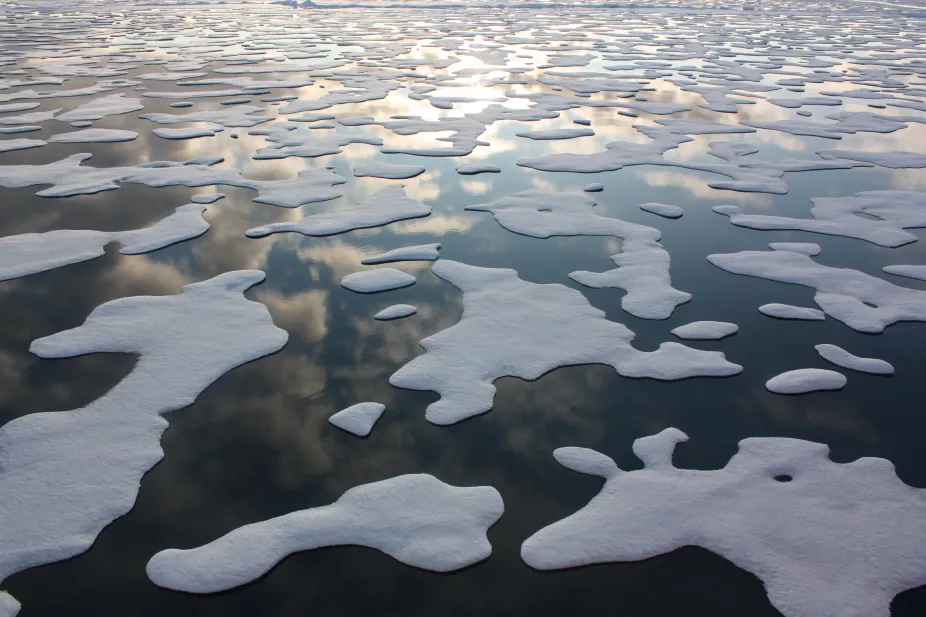How Sunshine Warms the Earth
The Earth would be freezing without the Sun. Rays of sunshine heat the ground. Then the ground heats the lowest part of the atmosphere. If the same amount of energy coming to our planet as sunshine goes back out to space as heat, then Earth doesn't heat up or cool down. But as we add greenhouse gases to the air, some of the heat is trapped, which causes the climate to warm.

Rays of sunshine warm the surface of the Earth.
UCAR
Have you ever worn a dark shirt on a warm, sunny day? Your dark shirt will absorb more sunshine than a light shirt, and you’ll get warmer. On a large scale, this happens to the Earth. Forests, lakes, oceans, glaciers, deserts, and cities all absorb, reflect, and radiate sunshine differently.
Ice is like a light shirt. Sea ice and glaciers reflect sunshine back out to space. But ice is melting as the climate warms, exposing the ocean or rocky land below it. The ocean and rocks absorb more sunshine because they are darker in color. This makes our climate even warmer.

The sea ice in this picture is floating on seawater in the Arctic. Because sea ice is white, it reflects sunshine back out to space. The dark ocean water absorbs sunshine. As sea ice melts because of climate warming, less sunshine is reflected, and more is absorbed, which warms our planet even more.
Credit: NASA Goddard